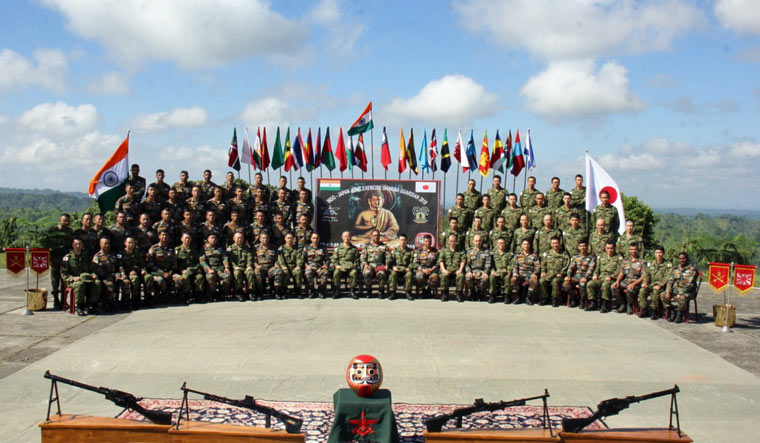The joint military exercise between the Japanese army and the Indian Army, in Mizoram, concluded today. Incidentally, the poll-bound state—Mizoram goes to assembly polls on November 28—had once seen Chinese-backed militant activities.
Called the Dharma Guardian-2018, the exercise began on November 1.
"It's a significant step towards fostering military and diplomatic ties between the two countries," said a spokesperson of the Indian Army.
It is a significant step for Japan, which, of late, has been showing an intense desire to emerge as a big military player to overtake its two "tense neighbours" North Korea and China.
Japanese constitution does not recognise the military strength of the country but Prime Minister Shinzo Abe is all set to amend the constitution by 2020 and put Japan on the world map of defence capabilities. Interestingly, Japan is known as the fifth largest defence superpower unofficially.
Japan has decades-old military ties with the US under which the latter has the compulsion to assist Japan in matters related to maritime defence, ballistic missile defence, domestic air control, communication security and disaster response operations.
It was for the first time Japan has engaged in a joint military exercise with the Indian Army, and that too in the heavily militarised northeast region. Interestingly, it was in the northeast where Japanese forces were defeated during World War II because of their lack of knowledge about jungle warfare.
At Vairengte in Mizoram, the Japanese forces were trained in jungle warfare and counter insurgency. Indian Army, too, learnt about the intelligence input gathering network of the Japanese army.
Said a spokesman, "The primary focus of the exercise was to train and equip the contingents to undertake joint counter insurgency and counter terrorist operations in urban and semi-urban terrains."
The officials say that the participants were initially familiarised with each other's organisational structure, tactical drills and planning process before the joint tactical exercises.
The Japanese were also trained on the wide spectrum of counter insurgency operations, including joint training on weapons and equipment, field training exercise and handling of improved explosive devices. The defence ministry said that the operational exercise would open future cooperation between India and Japan.
Even as the Japanese forces were leaving after the joint exercise, a 20-member Bangladesh military delegation team arrived in north Bengal for a five-day visit to various defence establishments that fall under Trishakti Corps (33 corps) of the Indian Army. The team proceeded to Indian Army posts in Darjeeling.
"The purpose of the visit here is also to have a look at the military training given by the Indian Army. Bangladesh Army would be familiarised with the training in mountain warfare and will be shown various training institutes," said an officer.
The eastern command of the Indian Army calls it a bonhomie between the two armies.
"The bonhomie and cooperation developed through such visits would go a long way in enhancing the spirit of mutual understanding and friendship in the years to come," said a statement released by Fort William.



